Check out these amazing hotel deals!
- Save up to 30% on your hotel in Hawaii!
- Last-minute holiday hotel deals
- Top hotel deals for a new year trip
- Visiting Paris? Find the Best Deals & Reviews at TripAdvisor.
- Save 30% on hotels in Ocean City, Maryland...a TripAdvisor Top 10 Summer Destination!
- Save up to 30% on your hotel on your Winter Vacation!
- Find top-rated hotels at the lowest prices on TripAdvisor. Check rates now!
- Save up to 30% on hotels for a romantic getaway!!
Believers or not, it is undeniable that religion has always played a fundamental role in human history, leaving an important imprint on all civilizations. Just think of the great Roman temples, the Greek gods, the Egyptian culture, or the great Hindu and Buddhist temples. And, despite the passing of the years, even millennia, today, we are still able to admire and visit some of the largest temples ever built.
Are you ready to travel with us around the globe and through time? Let’s visit the 10 largest temples in the world!
| Temple | Location |
|---|---|
| Baalbek Temple | Baalbek, Lebanon |
| Meenakshi Amman Temple | Madurai, India |
| Brihadeeswarar Temple | Tamil Nadu, India |
| Tikal Temple IV | Tikal, Guatemala |
| Jetavanaramaya | Anuradhapura, Sri Lanka |
| Sri Ranganathaswamy | Tamil Nadu, India |
| Akshardham Temple | New Delhi, India |
| Borobudur | Magelang, Central Java |
| Karnak Hypostyle Hall | Luxor, Egypt |
| Angkor Wat | Siem Reap, Cambodia |
10. Baalbek Temple, Baalbek (Lebanon)
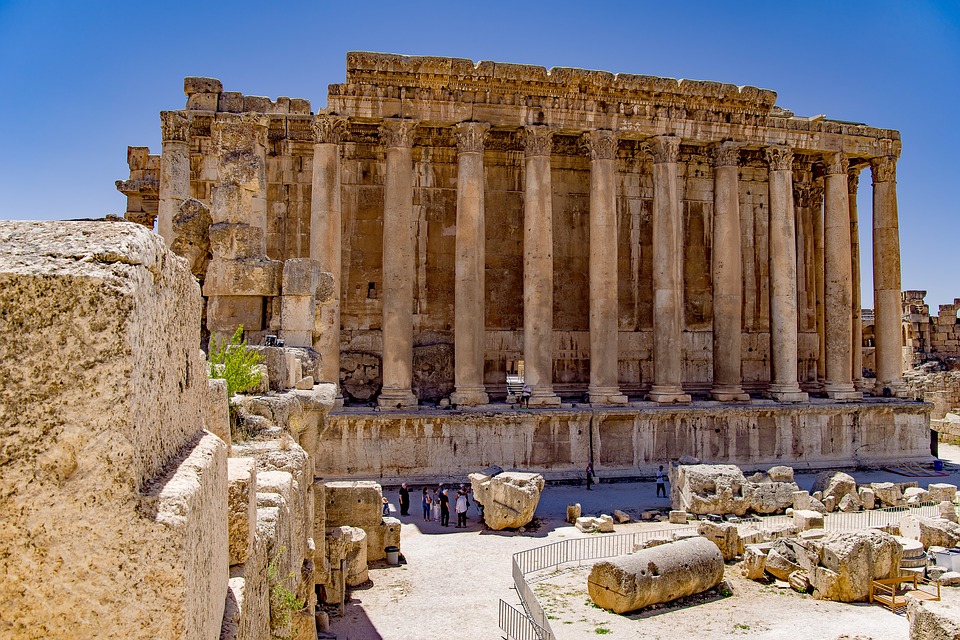
Let’s start this list by visiting the Baalbek Temple, in the homonymous city. It’s located in Lebanon, about 65 km from the capital, Beirut, not very far from the border with Syria. It is one of the most important archaeological sites in the whole Middle East, declared a UNESCO World Heritage Site in 1984.
The history of the city is very old, with the first settlements dating back to 2000 BC when it was inhabited by the Canaanites. But the remains that can be admired today date back to the Roman era of Baalbek, more precisely to 42 BC, when Caesar ordered the construction of the three great temples built in honor of the great Roman gods. The largest is dedicated to Jupiter. Then, there are those of Bacchus and Venus. What is immediately noticeable are the foundations of these temples. They are made up of huge monoliths that are practically impossible to move. For years, researchers have been looking for a solution to this puzzle.
9. Meenakshi Amman Temple, Madurai (India)
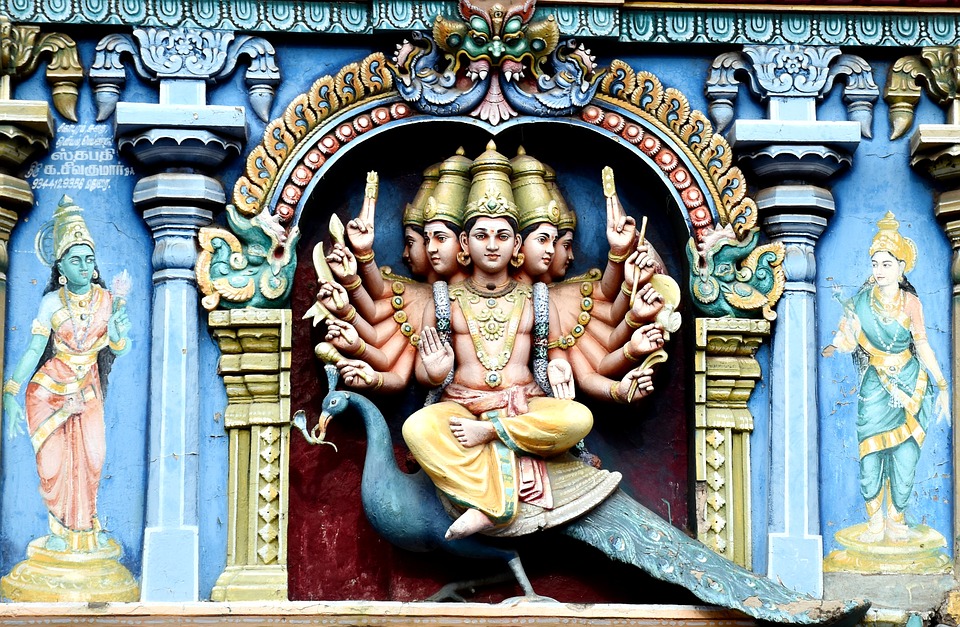
We move to the oldest city in southern India, the city of Madurai, in the federated state of Tamil Nadu. Here is the temple of Meenakshi Amman, located right in the center of the city, taking up an area of 180.000 square meters. This temple is the highest expression of the Dravidian culture, a population that settled in this part of India 6000-5000 years ago.
Unfortunately, the temple we admire today is not entirely the original one. It was rebuilt between the 15th and 17th centuries since it was severely damaged and sacked in the 13th century due to the attack of the armies of the sultan of Delhi. It is dedicated to Parvati, known as Meenakshi, and his consort Shiva, referred by the name of Sundareswarar.
8. Brihadeeswarar Temple, Tamil Nadu, (India)
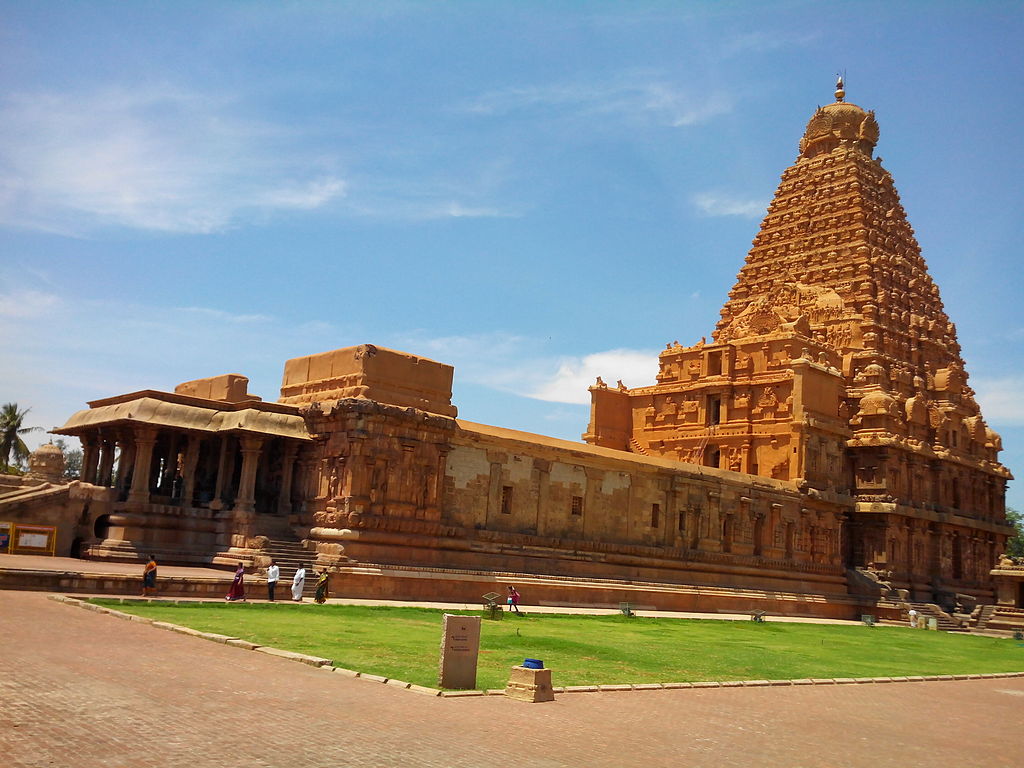
We are still in India, but this time 170 km north of Madurai, in the city of Tamil Nadu, the capital of the homonymous federal state in the south of the country. In the small town of Thanjavur is the Brihadeeswarar Temple, also called Rajarajesvaram or Peruvudaiyār Kōvil. It is a Hindu temple dedicated to Shiva and one of the largest temples in all of southern India, covering an area of 180.700 square meters.
Brihadeeswarar is the best architectural expression of the Chola dynasty period and is made up of a series of temples. The largest temple is the Big Temple, which was declared a UNESCO World Heritage Site. Inside of it is the sacred area where one of the largest statues of the Nandi bull is found. Nandi Bull is the white bull that represents the mythical mount of Shiva.
7. Tikal Temple IV, Tikal (Guatemala)
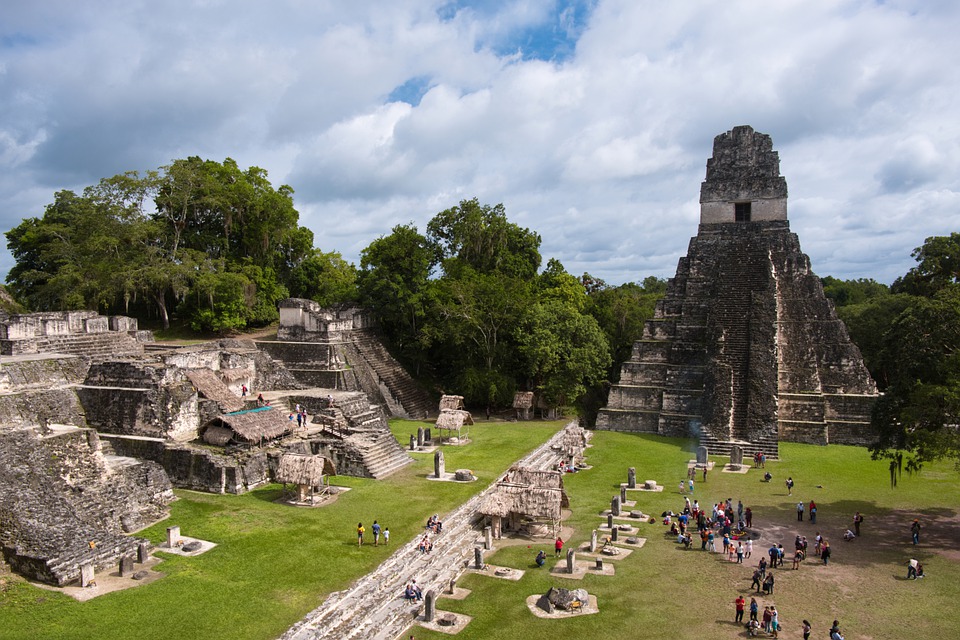
From India, we go to Central America, more precisely to Guatemala. Here we find the Tikal Temple IV, located inside the Tikal National Park. It’s the largest of the ancient cities of the Maya civilization, whose construction began in 900 BC. The park is located in the Maya Biosphere Reserve, which reaches up to borders with Belize and Mexico.
Within the Tikal complex, Tikal Temple IV is the largest of all. Its construction dates back to 741 BC and its height reaches 64.6 meters. It is a Mesoamerican pyramid located in the western corner of the complex. It was built during the reign of the 27th king of the Tikal dynasty, aka Yik’in Chan K’awiil, and many archeologists and historians think that his yet undiscovered tomb is somewhere just below this temple.
6. Jetavanaramaya, Anuradhapura (Sri Lanka)
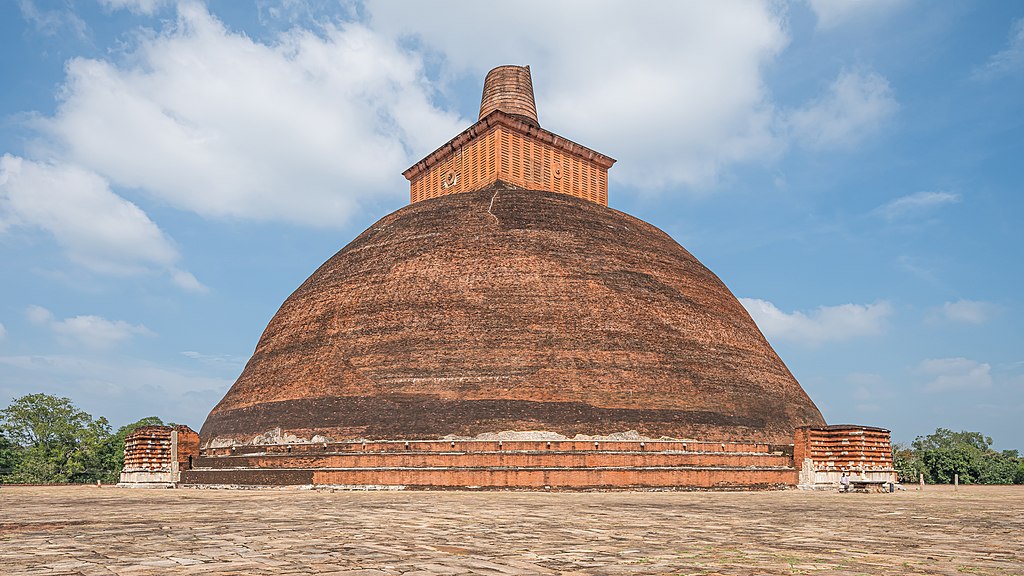
Let’s go back to Asia, this time to Sri Lanka, the island state near the southern coast of India. Here is the Jetavanaramaya Temple, located in the locality of Anuradhapura, in the northern part of the island. It is the largest stupa in the world. It’s 122 meters high with a base of 233.000 square meters.
Wondering what stupa is? It’s a Buddhist monument the main function of which is to preserve relics. The relic kept in the Jetavanaramaya stupa of Anuradhapura is the belt that belonged to Buddha.
This temple was being built from the 3rd century BC, at the behest of King Mahasena, and completed years later by his son Maghavan I. It is assumed that around 93 million bricks were used for its construction. And it’s no wonder since only the dome has a diameter of about 95 meters.
5. Sri Ranganathaswamy, Tamil Nadu (India)
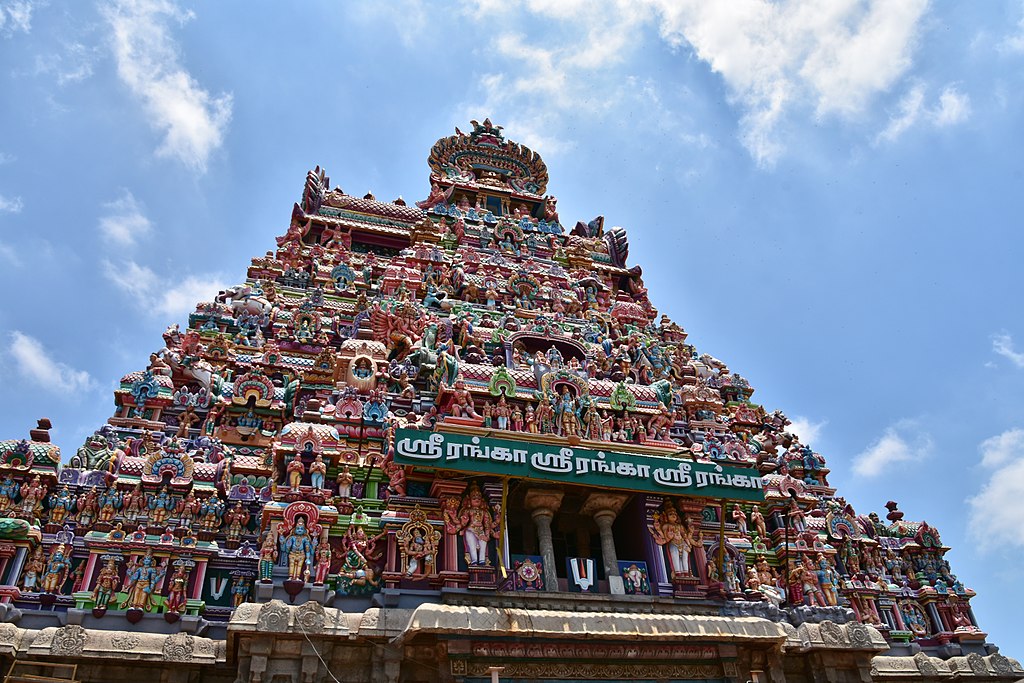
Next, we go back to India, in the city of Tamil Nadu (again), in Tiruchirappalli. Here is the Sri Ranganathaswamy temple, another majestic and incredible complex, which covers an area of 620.000 square meters. This shrine, also called Thiruvarangam, is dedicated to Ranganatha, a recumbent form of the deity Maha Vishnu.
It is one of the most important Vishnu temples in all of India. It is part of a pilgrimage – the first of the eight manifest shrines of the god Vishnu. The whole complex has 39 large pavilions, also called mandapam halls, as well as 7 prakaram (wall enclosures), 21 gopuram (monumental towers), and 81 sanctuaries.
4. Akshardham Temple, New Delhi (India)
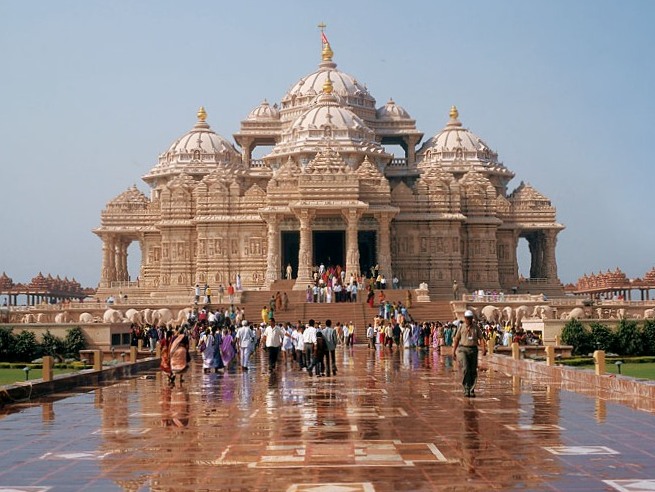
Going to New Delhi, we find the most modern temple on this list. It was built between 2000 and 2005 by around 3.000 volunteers. It is the Akshardham Temple, also called the Swaminarayan Akshardham complex, because, apart from being a Hindu temple, it’s also a real spiritual and cultural campus.
The Akshardham Temple complex is made up of several parts. In the center is the Mandir, which is built in pink sandstone and marble standing proudly with its 43 meters height and 98 meters length. This is the spiritual center and everyone is admitted no matter the religion. But that’s not all! In the complex, you will find exhibitions, a theater, a beautiful fountain that lights up at night, lots of statues, and enchanting gardens.
3. Borobudur, Magelang (Central Java)
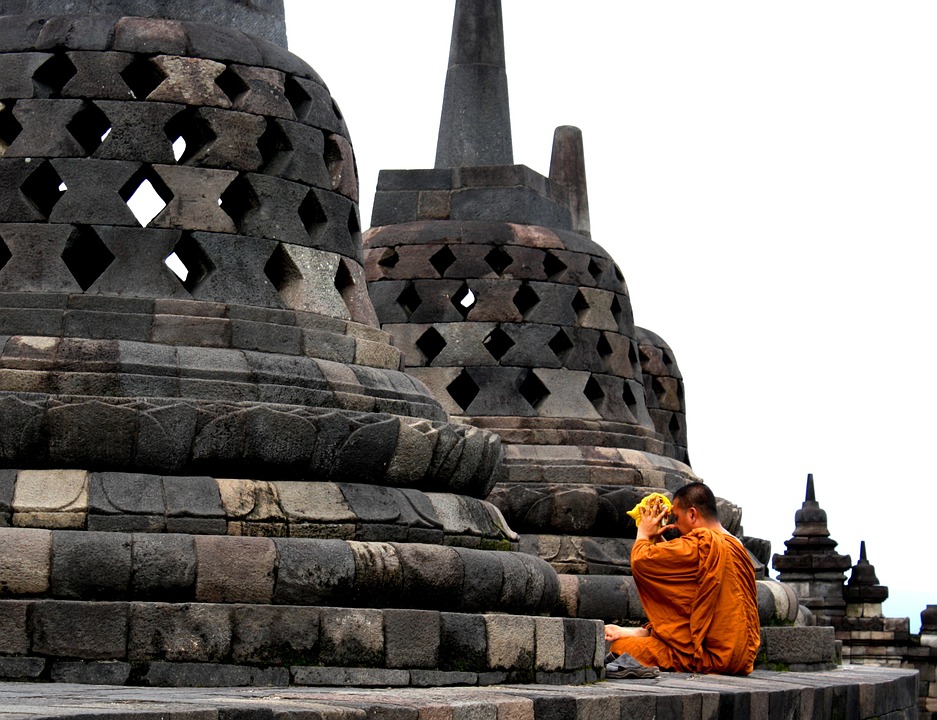
A UNESCO World Heritage Site since 1991, this temple is located on the island of Central Java, in the town of Magelang. It is a Buddhist temple built in 800 AD during the Sailendra dynasty and is really huge with a square base of 123 meters per side and 35 meters in height. It was built with over a million and a half stones.
It is the most visited monument in Indonesia and it looks like a mountain. It is made up of several terraces and you climb to the top along the long stairways. These stairways represent the ascension of the person and his human soul as the closer he gets to the top the more he reaches the purity of the spirit. There are bas-reliefs the whole time along the path and several bell-shaped stupas and Buddha statues at the top.
2. Karnak, Luxor (Egypt)
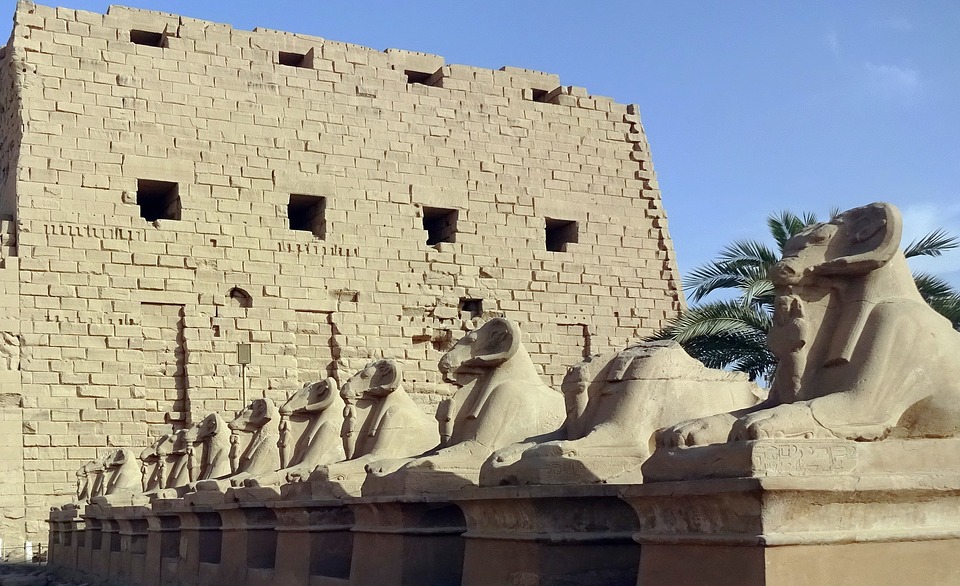
The Karnak temple complex is one of the most visited attractions in Egypt. It’s located in the city of Luxor and was built for the Egyptian gods Amun, Mut (his wife), and Khons (their son). There are many temples you can visit here, but the largest one is the Great Hypostyle Hall. It’s the room where, instead of the walls, columns support the roof of the Luxor complex.
This area alone covers 5.000 square meters. Unfortunately, the ceiling is no longer present, but there are still 134 huge columns arranged in 16 rows. The tallest columns, or those of the central rows, reach up to 26 meters, with a circumference of 11 meters.
1. Angkor Wat, Siem Reap (Cambodia)
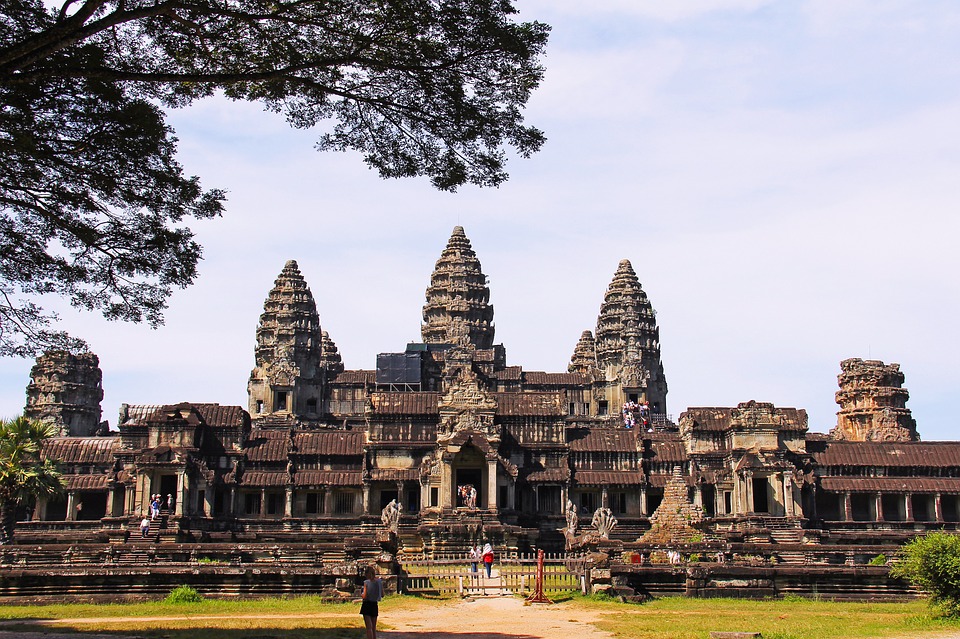
And here is the largest temple in the world, Angkor Wat, in Siem Reap, Cambodia. Apart from being the main attraction of the country, it has also become its symbol. It is located north of the city, in the northern part of the country. It’s not only the largest but also the most visited archaeological complex in Southeast Asia. It covers an area of 1.626.000 square meters and was built during the Khmer Empire, one of the longest empires in this area, at the behest of King Suryavarman II.
Declared a UNESCO World Heritage Site, Angkor Wat is the most important temple of the entire archaeological site and the best preserved in the whole area. There are various hypotheses about its ancient function. It’s assumed that it was probably built as a mausoleum because it’s directed towards the west and the door on the western side is a typical feature of funerary buildings.
TIP: If you want to visit this temple, keep in mind that visiting the whole area takes around 5 days.
Check out these amazing hotel deals!
- Save up to 30% on your hotel in Hawaii!
- Last-minute holiday hotel deals
- Top hotel deals for a new year trip
- Visiting Paris? Find the Best Deals & Reviews at TripAdvisor.
- Save 30% on hotels in Ocean City, Maryland...a TripAdvisor Top 10 Summer Destination!
- Save up to 30% on your hotel on your Winter Vacation!
- Find top-rated hotels at the lowest prices on TripAdvisor. Check rates now!
- Save up to 30% on hotels for a romantic getaway!!
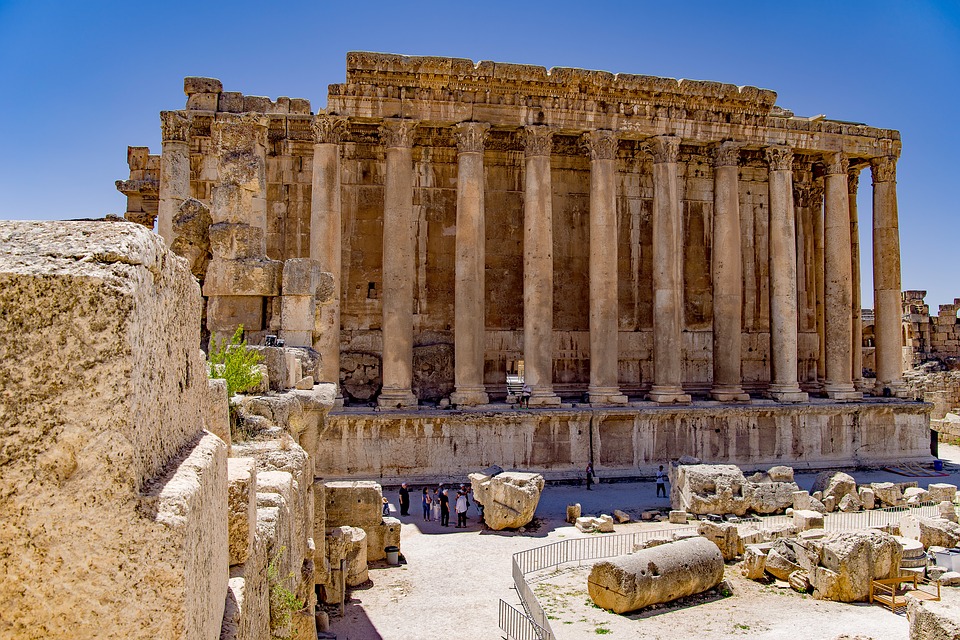





Find Us on Socials